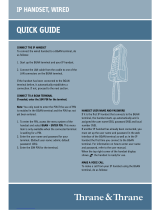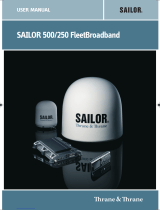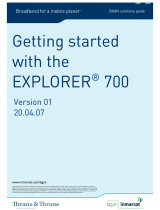
ii
Content
3 Installation
3.1 Content of the package ...................................................................... 63
3.2 Tools needed ...................................................................................... 67
3.3 Installation precautions ...................................................................... 68
3.3.1 Radiation hazard ................................................................................... 68
3.3.2 Antenna Cable ....................................................................................... 68
3.3.3 Obstruction ............................................................................................ 69
3.3.4 Interference ........................................................................................... 69
3.4 Installation of the ADU ....................................................................... 72
3.4.1 Antenna grounding ................................................................................ 72
3.4.2 Important mounting notes ...................................................................... 73
3.4.3 Mounting the antenna ............................................................................ 74
3.5 Installation of the BDU /Terminal ........................................................ 78
3.5.1 Where to install? .................................................................................... 78
3.5.2 How to install ......................................................................................... 78
3.5.3 Antenna cable grounding ....................................................................... 80
3.5.4 BDU/Terminal grounding ....................................................................... 81
3.5.5 BDU /Terminal power connection .......................................................... 82
3.6 Installation of the AC/DC Power Supply ............................................. 84
3.7 Installation of the Thrane IP Handset ................................................. 87
3.8 Installation of the Alarm Panel FleetBroadband ................................ 89
3.8.1 Connectors .............................................................................................. 89
3.8.2 LAN (PoE) interface ................................................................................ 89
3.8.3 DC Power input (optional) ....................................................................... 90
3.8.4 Cable requirements ................................................................................. 91
3.8.5 Connecting the Alarm Panel .................................................................... 91
3.8.6 Verifying the installation ........................................................................... 92
3.9 To install the Alarm Panel .................................................................... 93
3.9.1 General installation requirements ............................................................ 93
3.9.2 Mounting the Alarm Panel ....................................................................... 93
4 Interfaces
4.1 Antenna Connector .......................................................................... 101
4.2 L-band output ................................................................................... 101
4.3 Phone/Fax interface ......................................................................... 102
4.3.1 ConguringthePhone/Faxinterface ................................................... 103
4.4 SIM-Card reader .............................................................................. 104
4.5 ISDN interface .................................................................................. 105
4.5.1 ConguretheISDNinterface ............................................................... 106
4.6 LAN Interface, VOIP ......................................................................... 107
4.6.1 Local exchange ................................................................................... 110
4.6.2 Supplementary services .......................................................................111
4.7 LAN interface, Data .......................................................................... 113
4.7.1 Connecting a computer to the LAN interface ....................................... 113
4.7.2 The Network Management system ...................................................... 114
4.8 DC Input ........................................................................................... 119
4.9 I/O ports ........................................................................................... 119
4.10 Grounding ........................................................................................ 121
5 Troubleshooting
5.1 Status signalling ............................................................................. 125
5.2 Status signalling ............................................................................. 127
























